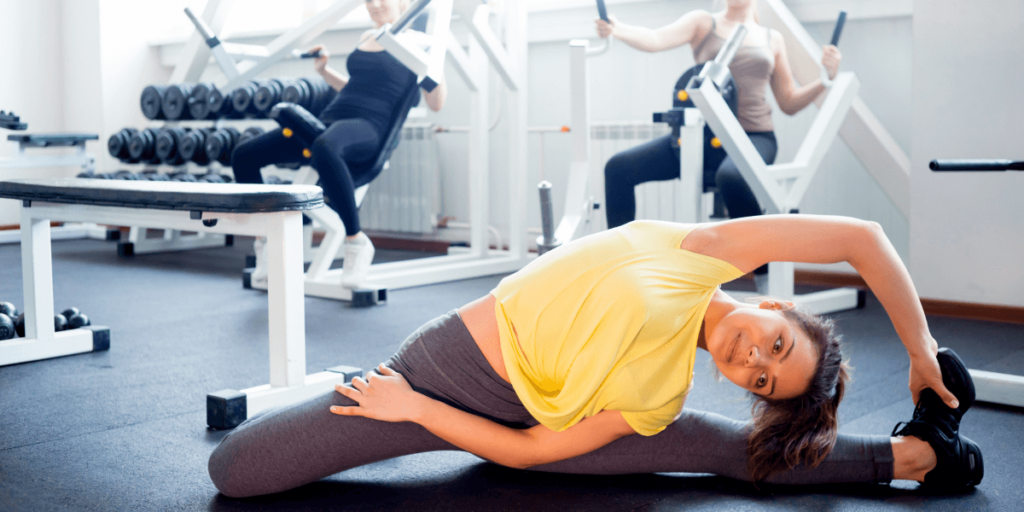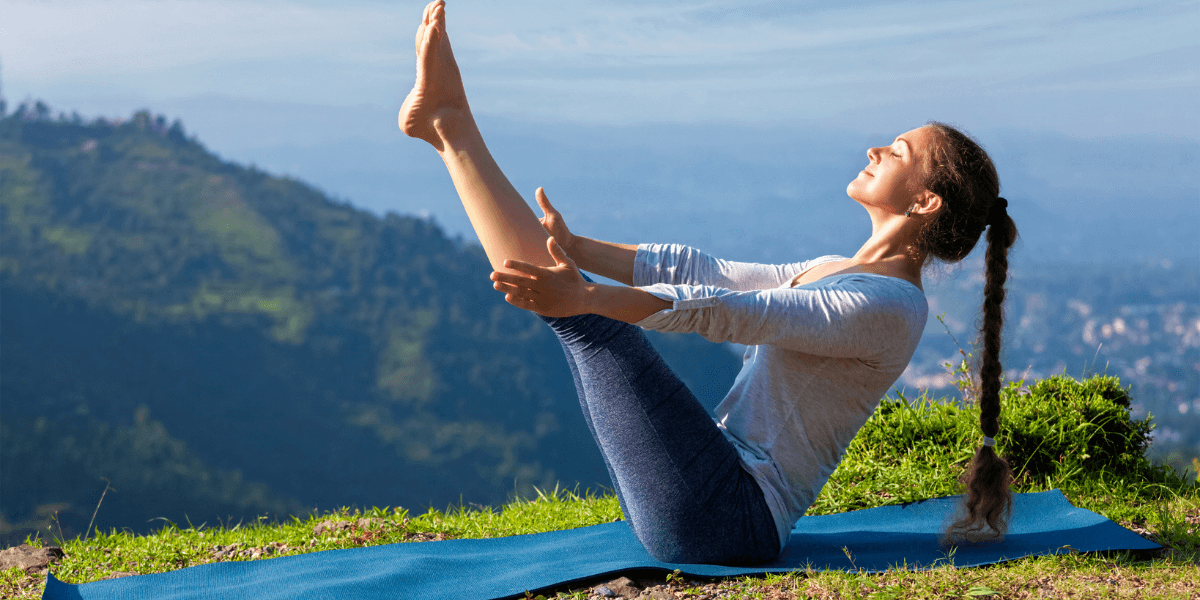Yoga has long been recognized as a beneficial mind-body practice. It boosts stamina, strength, calmness, flexibility, and overall well-being. Deep stretch yoga, in particular, is an excellent approach to increase flexibility when tight muscles create discomfort or restrict movement.
It can help to lengthen muscles and reduce stiffness brought on by sedentary lifestyles, stress, or underuse of a certain muscle group. Consider deep stretch yoga if you wish to relieve stiff muscles. Check out the list below for some yoga positions that can help you deepen your stretch and elongate your muscles, release tension, and enhance flexibility.
Note: If you have any health issues and want to try these positions, consult your doctor first.
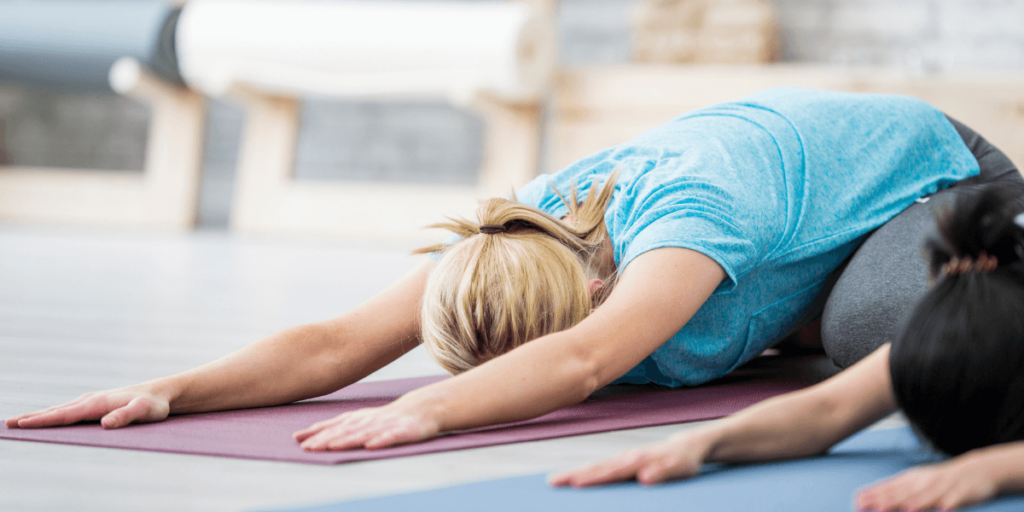
Child’s Pose (Balasana)
Child Pose or Balasana is a great warm-up for a deeper stretch. Child Pose boosts circulation and oxygenation throughout the entire body. The asana calms both your body and mind while also releasing any stored energy.
Instructions:
- Kneel with your toes together and knees hip-width apart on the floor. Your palms should be resting on top of your thighs.
- Reduce your torso to between your knees on an exhalation. With your hands facing down, extend your arms alongside your torso. Your shoulders should be relaxed and pointing down. Rest for as long as you need in this pose.
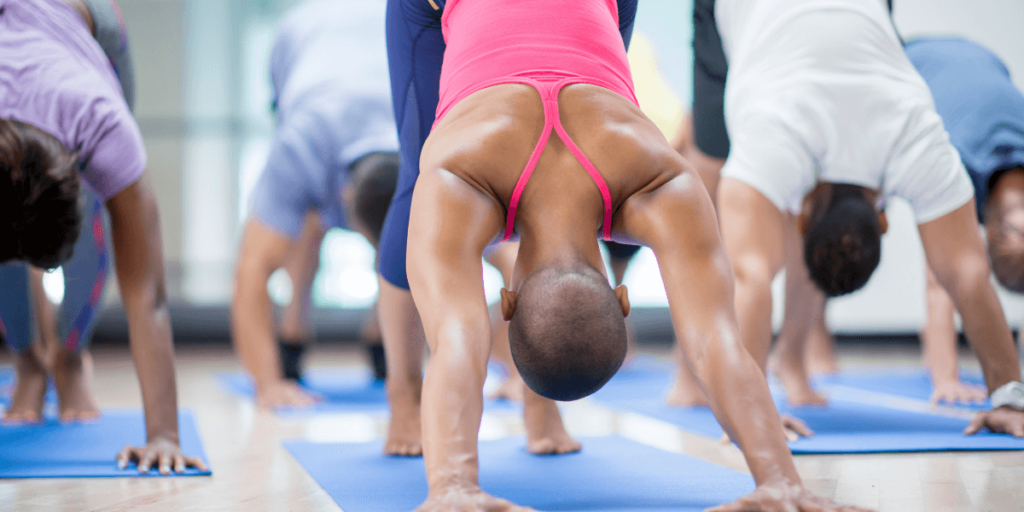
Downward-Facing Dog Pose (Adho Mukha Svanasana)
This yoga pose stretches the shoulders, feet, calves, arms, and hamstrings deeply. It elongates the spine and strengthens the arms and legs, and is also known as the downward-facing dog stance. It promotes digestion and aids in the loosening of stiff muscles, particularly in the legs and back.
Instructions:
- Gently get down on your hands and knees, tucking your toes. Then straighten your arms.
- Next, straighten your legs as much as you can as you exhale. As you stretch your spine, lift your hips.
- Reach your arms ahead of you, fingers spread out on the floor, with your head and torso facing down. Make an effort to press your heels into the ground.
- Raise your shoulders and then lower them. The tip of the tailbone should point upward.
- Take a normal breath. It’s important to keep your head and neck relaxed.
- Hold this position for up to one minute. Exhale and get down on your hands and knees.
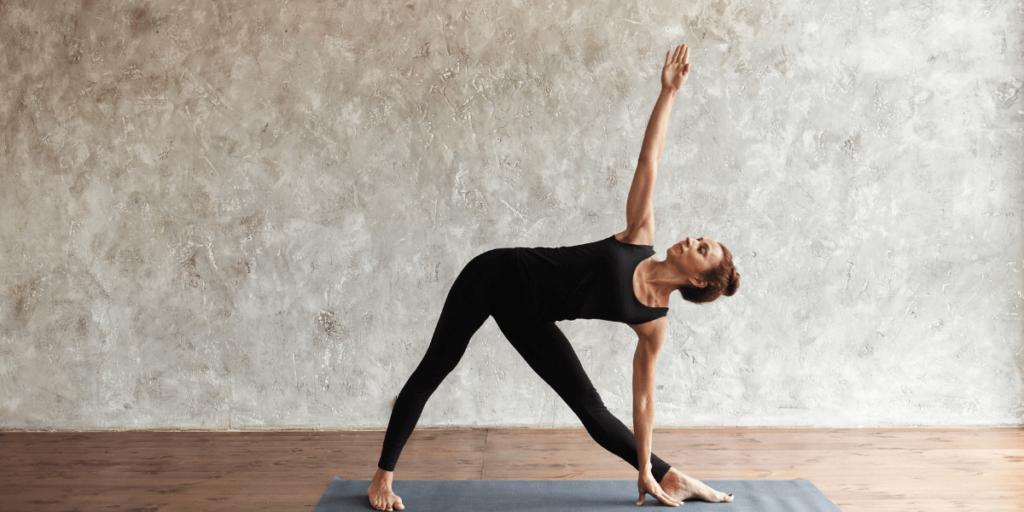
Extended Triangle Pose (Utthita Trikonasana)
Extended Triangle Pose is a wonderful total-body stretch. It improves balance and full-body alignment by targeting the shoulders, chest, hips, legs (particularly hamstrings), arms, and sides of the torso.
Instructions:
- As you inhale, stand up straight with your feet facing forward and slide your feet out three to four feet. Extend your arms to the sides as far as you can.
- Turn your right foot inward (approximately 15 degrees) and your left leg outward at a 90-degree angle from the hip socket, with your left foot, turned out. The left big toe should point in the same direction as your thigh and knee.
- Bend down over your left leg and shift your hips slightly to the right as you exhale. Stretch your left arm down to the floor and your right arm up to the ceiling with the palms of your hands facing forward. Press the inner left and outer right feet into the floor for balance. The floor, your shin, or a block behind your left leg can all be good places for your left hand to rest.
- Face forward if you’re having trouble turning your head in the direction of your right arm. Stay in this position for up to 30 seconds, then exhale as you rise. Repeat on the opposite side.
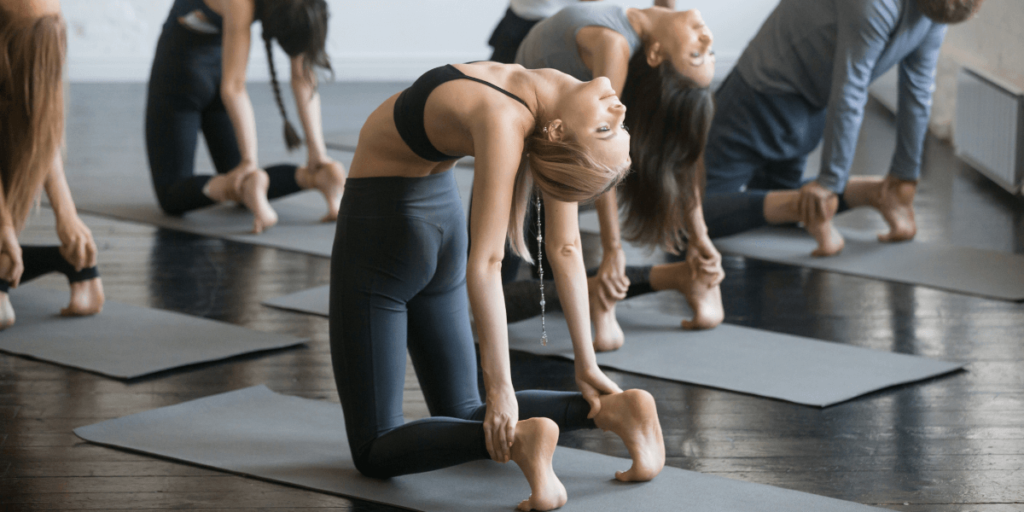
Camel Pose (Ustrasana)
Camel pose is a straightforward backbend that expands the chest and improves upper-body flexibility. As well as it also improves shoulder mobility.
This yoga pose is particularly useful for office workers who sit at a desk all day. Slouching as a result of long and continuous work hours can create back problems as well as harm organs by squeezing them. Hence, this pose will definitely stretch the front muscles, abdomen, thighs, chest, and neck.
Instructions:
- Kneel perpendicular to the floor with your thighs. Grasp the backs of your hips with both hands. Maintain a strong grip on the floor with your shins and feet.
- Exhale as you arch backward and forwards with your hips and thighs. As your stomach extends, gently curve your spine. Maintain an open upper chest and backward shoulder blades. Allow your neck to gently expand to a comfortable length.
- Keep your arms straight and your hands on your heels and soles. Place your hands on blocks next to your calves if this stretch is too deep. Allow your head and neck to relax and extend backward without strain. Hold this position for at least 20 seconds while breathing normally. Inhale and steadily raise yourself back up by engaging the buttocks.
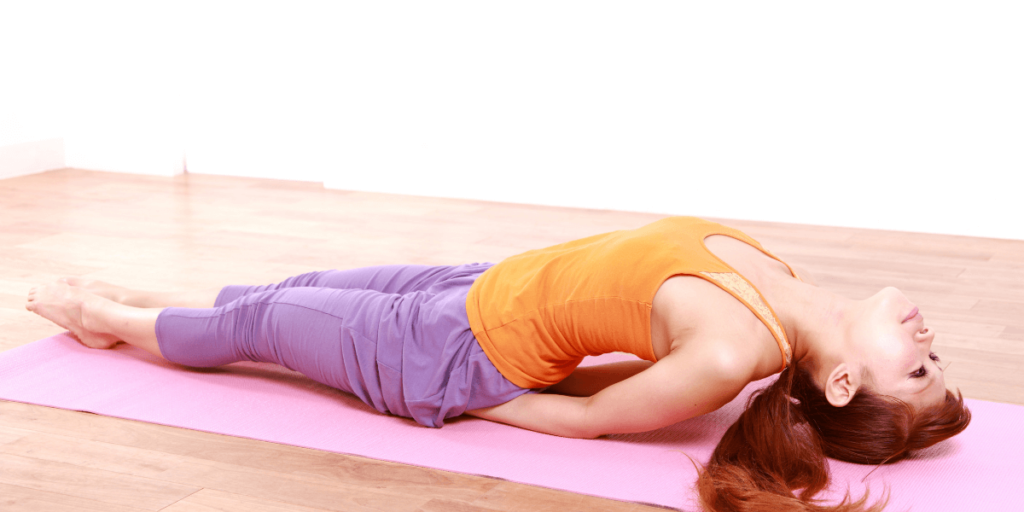
Fish Pose (Mastyasana)
This asana offers the muscles of the throat a good stretch, making it one of the best exercises for treating thyroid problems. It’s a fantastic yoga pose to help with back pain. It soothes and relaxes tense shoulders. It improves lung capacity by facilitating deep breathing. It’s also an excellent approach to relieve stress and exhaustion caused by a stiff neck and back.
Instructions:
- Sit in the Lotus Pose. Take a couple of deep, steady breaths.
- Slowly bend backward and lie down on the floor while maintaining Lotus Posture. While bending backward, use your forearms and elbows to support your body.
- Raise your chest a little higher. Turn your head so that the crown of your head is facing the ground. Arrange your back in the most comfortable position.
- Hold to your big toes with your elbows on the floor. The legs, buttocks, and head now support the body.
- Slow down your breathing. Maintain your current position for as long as it is comfortable.
- Bring your back to the floor and straighten your head to exit the posture. Place your palms on the floor to return to a sitting position. Allow the Lotus Posture to be released.
- In Lotus Posture, repeat Steps 1 through 6 with the legs crossed on the opposing side.
Takeaway!
These poses are a great place to start, but keep in mind that yoga’s holistic approach is what makes it one of the most effective ways to enhance your flexibility, as well as many other aspects of your physical and mental health.
